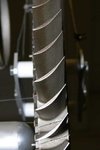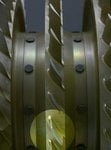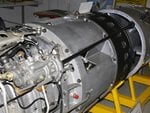Hi everyone,
Since there seems to be no thread on the Jumo 004 yet, I thought I'd simply start one with a couple of pictures from the Luftfahrtmuseum Hannover-Laatzen ...
Here is the turbine wheel of the Jumo 004, showing the firtree-style turbine blade attachments.
Regards,
Henning (HoHun)
Since there seems to be no thread on the Jumo 004 yet, I thought I'd simply start one with a couple of pictures from the Luftfahrtmuseum Hannover-Laatzen ...
Here is the turbine wheel of the Jumo 004, showing the firtree-style turbine blade attachments.
Regards,
Henning (HoHun)









